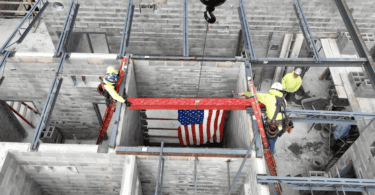by Jeff Talka
When clients hire us to design their high-performing project, they have expectations which we must meet and exceed. In my travels through this profession, I have been asked questions like: Why does this cost so much?, How can I get it quicker?, and Why are my choices for technical furniture so limited?
As architects, we are trained to listen to our clients’ needs, respond to trends which our clients follow, and apply that knowledge in our work. But let’s examine the value we bring to our clients and to our communities at large. I have been involved in highly-technical projects for the last 35 years, and have experienced long-standing rationales:
- Architects have the knowledge and required experience to solve my problem.
- Architects have the ability to speak with contractors who will ultimately be building the project.
- Architects will act as the owner’s advocate.
Traditional approaches that are within accepted industry norms are fairly standard and limit our exposure to litigation. Unfortunately, this reality can stifle creativity. Better safe than sorry, right?
There is a more progressive direction we can take that reflects our client’s thinking and their processes. I see the nature of scientific discovery is evolving on several levels:
- Researcher demographics are changing: Team composition is moving from predominantly baby boomers to millennials and Gen Zers. Their research is computer-based and there is movement toward more social interaction both physically and virtually via mobile devices and other technologies.
- Advancing technology: With more technological resources, focused research is done quickly and effectively in the computer as opposed to empirical approaches. This impacts what the built discovery environment can look like.
- The reality of post-COVID-19: We are hearing of the “new normal” which welcomes remote working and hybrid meetings. How this will affect the research environment is evolving.
If we take these ideas into account and use them to challenge previous benchmarks we have assembled, we can position ourselves to develop design responses that are leading-edge programmatically, technologically and culturally. Benchmarks are a compilation of statistics taken from previously completed projects that serve as a snapshot in time and reflect the cultural and research trends at the time of initial design. In other words, they are a look in the rear-view mirror. Their value is that they can be used as projections to support emerging cultural and research trends.
The emphasis here is that the cultural trends should drive the benchmarks, and not vice versa. We can develop space programs and design strategies that support the evolution of the science. The building should allow this and not get in the way of the development of the science.
Based on the understanding of the trends mentioned above and applying them to present benchmarks, we have seen the following emerge in lab design:
- Collaborative spaces which encourage the interaction required by the social needs of the emerging demographics.
- Harnessing technology to allow research to occur outside of the formal lab environment.
- Emergence of more advanced dry lab spaces that are computing-intensive which implies the environments are less ventilation-driven.
- Convergence of workplace and laboratories.
- Adaptability of the research space to easily morph in response to the scientific direction.
As architects, we should embrace the new tools and challenges which will define how we develop research facilities that are adaptable, sustainable and culturally significant.
Jeff Talka, AIA, LEED AP is science + technology practice leader at The S/L/A/M Collaborative, Inc.











